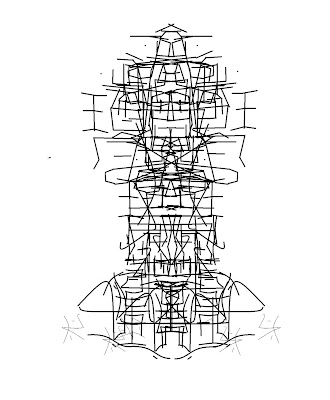RAW FILE
==================================================================
what is raw?
A camera raw image file contains minimally processed data from the image sensor of either a digital camera, a motion picture film scanner, or other image scanner.[1][2] Raw files are named so because they are not yet processed and therefore are not ready to be printed or edited with a bitmap graphics editor. Normally, the image is processed by a raw converter in a wide-gamut internalcolor space where precise adjustments can be made beforeconversion to a "positive" file format such as TIFF or JPEG for storage, printing, or further manipulation. This often encodes the image in a device-dependent color space. There are dozens, if not hundreds, of raw formats in use by different models of digital equipment (like cameras or film scanners).
Raw image formats are intended to capture the radiometric characteristics of the scene, that is, physical information about the light intensity and color of the scene, at the best of the camera sensor's performance. Most raw image file formats store information sensed according to the geometry of the sensor's individual photo-receptive elements (sometimes called pixels) rather than points in the expected final image: sensors with hexagonal element displacement, for example, record information for each of their hexagonally-displaced cells, which a decoding software will eventually transform into the rectangular geometry during "digital developing"
Processing[edit]
To be viewed or printed, the output from a camera's image sensor has to be processed, that is, converted to a photographic rendering of the scene, and then stored in a standard raster graphics format such as JPEG. This processing, whether done in-camera or later in a raw-file converter, involves a number of operations, typically including:[35][36]
- decoding – image data of raw files are typically encoded for compression purpose, but also often for obfuscation purpose (e.g. raw files from Canon[37] or Nikon cameras).[38]
- demosaicing – interpolating the partial raw data received from the color-filtered image sensor into a matrix of colored pixels.
- defective pixel removal – replacing data in known bad locations with interpolations from nearby locations
- white balancing – accounting for color temperature of the light that was used to take the photograph
- noise reduction – trading off detail for smoothness by removing small fluctuations
- color translation – converting from the camera native color space defined by the spectral sensitivities of the image sensor to an output color space (typically sRGB for JPEG)
- tone reproduction[39][40] – the scene luminance captured by the camera sensors and stored in the raw file (with a dynamic range of typically 10 or more bits) needs to be rendered for pleasing effect and correct viewing on low-dynamic-range monitors or prints; the tone-reproduction rendering often includes separatetone mapping and gamma compression steps.
- compression – for example JPEG compression
Cameras and image processing software may also perform additional processing to improve image quality, for example:
- removal of systematic noise – bias frame subtraction and flat-field correction
- dark frame subtraction
- optical correction – lens distortion, vignetting, chromatic aberration and color fringing correction
- contrast manipulation
- increasing visual acuity by unsharp masking
- dynamic range compression – lighten shadow regions without blowing out highlight regions
- The contents of raw files include more information, and potentially higher quality, than the converted results, in which the rendering parameters are fixed, the color gamut is clipped, and there may be quantization and compression artifacts.
https://www.adobe.com/digitalimag/pdfs/understanding_digitalrawcapture.pdf
https://en.wikipedia.org/wiki/Raw_image_format
=======================================================================
RAW
---------
Advance our buildings lighting before they get constructed.
Turn that place into a particle accelerator.
we can use the Neon technique to close the circuit.
Or not.
oh and thats what raw is.
See if you can tie it into the lemon battery.shit will be cool.
New Transformers just happened. Right now. In this moment.
I fixed the transformer issue with the oil.
we're primitive
We can power the entire building on liquid cooling.
How do we plug in objects?
with outlets.
Raw.

hold the mercury and you only need marble zinc copper powder
marbles ground
Means we have to build a base infront of he house with raw marble for this shit. Then put the house ontop.
Marble is ground. Atomic molecularisation and photon thermal transitioning through biome.
Grounding element.
Marble foundation and granite flood cellar with limestone. We use the limstone for a recurrent system with the mix. The natural lime with the push down thing. the walls are the battery things inside. Gotta mix up the solution with the liquid crystal.
Run some copper through the building. Wifi.
we just need the copper from the 14 gauge wire to have a wireless system throughout the building. we run it with the cooling system or power house.
Self Sustainable.
that with the computer trees. we got the system.
We use this shit for the Aurora borealis
=====================
and i figure out the battery with the sd card for the house.
we can charge them in pagodas.
which means we just upgraded the moss energy design for the house
.
upgrade to second phase
I should be able to put the radiator inside a transformer to power my supercharge
stage 3
========================================================================




Comments
Post a Comment